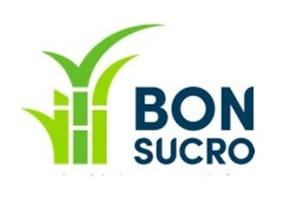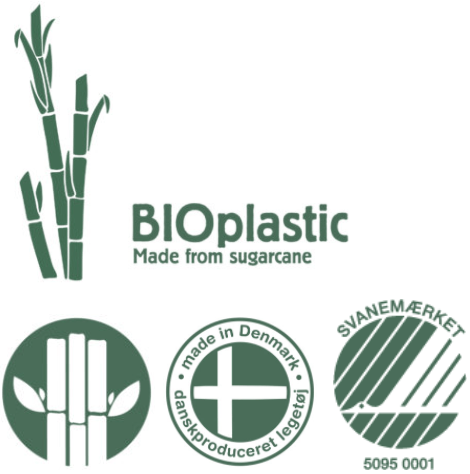
With dantoy's popular bioplastic series, we have expanded our already environmentally friendly range of plastic toys. The series is 100% eco-labeled, which means that the toys are environmentally friendly and free from harmful chemicals.
We are inspired by the pej group, Scandinavian Trend Institute, which has great knowledge of future trends in colors, among other things.
Our BIO gift boxes for our small sets are made of recycled paper. They have the same size, so they can be stacked nicely and are easy to wrap when given as a gift.
BIO toys can withstand dishwasher washing, can withstand temperatures from -18 degrees up to 70 degrees, are approved for food contact, and the product can be recycled, including with fossil plastic.

The production of bioplastic reduces CO2 in the atmosphere.
The sugarcane is grown on controlled, non-toxic plantations in central and southern Brazil.
The sugarcane is harvested at intervals of 6-12 months.
Bioplastic produced from sugarcane is a 100% sustainable raw material.
The life cycle analysis (LCA) of bioplastic shows that the sugarcane absorbs 3.09 kg of CO2 from the air (verified by E4tech from England). 80% of the energy used in the production of the raw material comes from renewable resources. The LCA for the entire process is 2.32 CO2eq. /Kg.
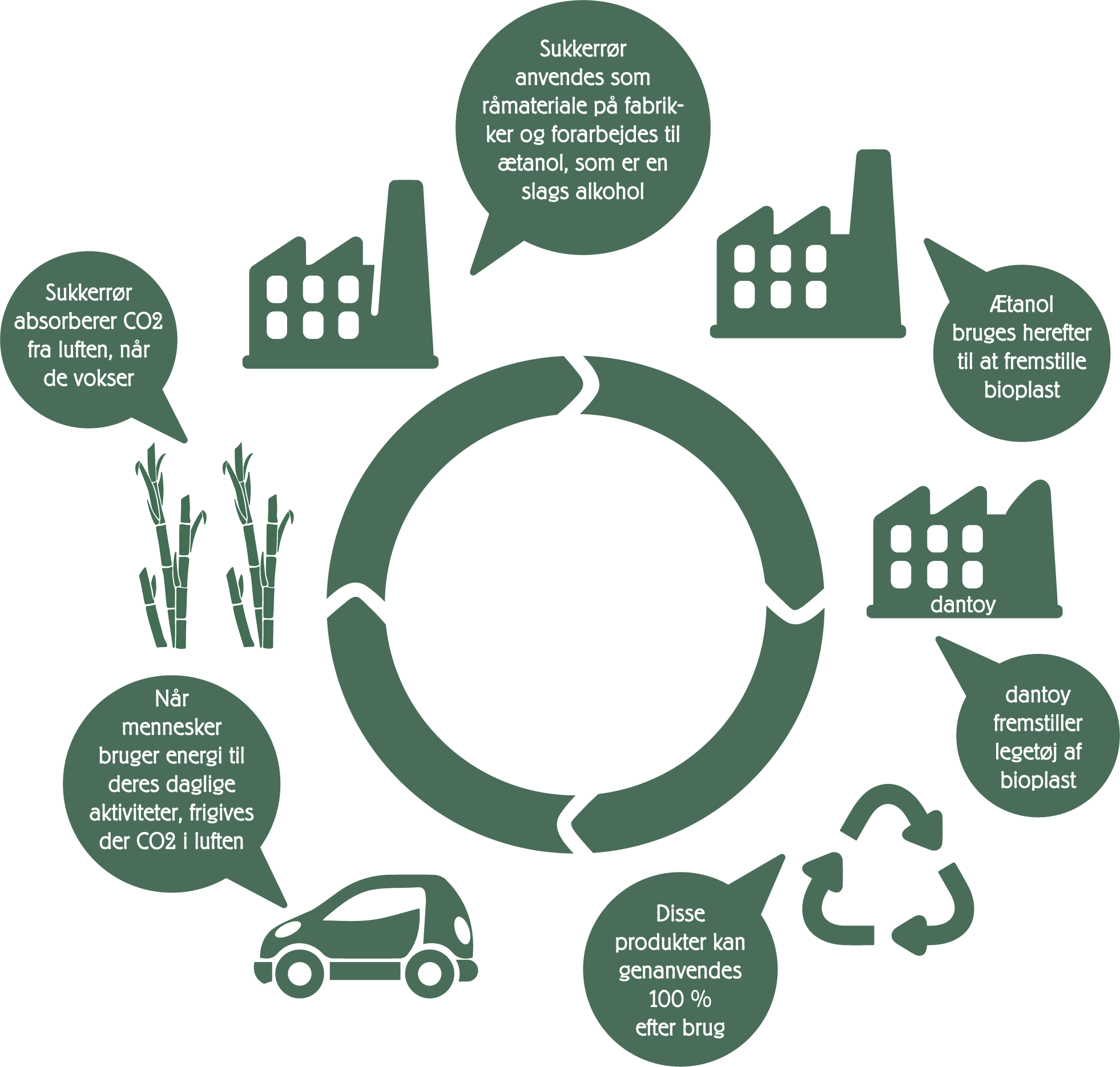

"I'm Green" symbol is only released for use after confirmation of the amount of sustainable raw material contained in the product. The symbol may only be used when the test results are verified by a third party (C-14 carbon ASTM test).
Traditional PE (polyethylene) is primarily made from crude oil, whereas "I'm Green" PE (bioplastic) is made from a minimum of 90% sugarcane (ethanol). Ethanol is extracted from the sugarcane, which is a form of alcohol. Ethanol is then used to produce bioplastic.
The sugarcane used for dantoy's bioplastic is grown on plantations in the southern and central regions of Brazil, more than 2,500 km away from the Amazon region. The expansion of sugarcane cultivation is regulated by the "Sugarcane Agroecological Zoning" formed by the Brazilian federal government. The harvested sugarcane is transported by train for further processing, which is more environmentally friendly compared to transportation by truck.
The sugarcane can be harvested multiple times. New plants are planted every 5-7 months. The field is harvested at intervals of 6-12 months and can therefore be considered a sustainable raw material.
The sugarcane absorbs CO2 from the air, thereby minimizing the greenhouse effect. In the production of bioplastic, the CO2 balance from the plant's growth to the finished bioplastic is positive. For every kilogram of bioplastic produced, 3.09 kg of CO2 is removed from the atmosphere.
dantoy's bioplastic, like our traditional plastic toys, is a quality product with a long lifespan, not designed to degrade in nature. Our toy products do not contain any toxic substances, but they are also not intended to be discarded in nature as waste. They should be disposed of in accordance with applicable laws. Both bioplastic and traditional plastic are 100% recyclable.
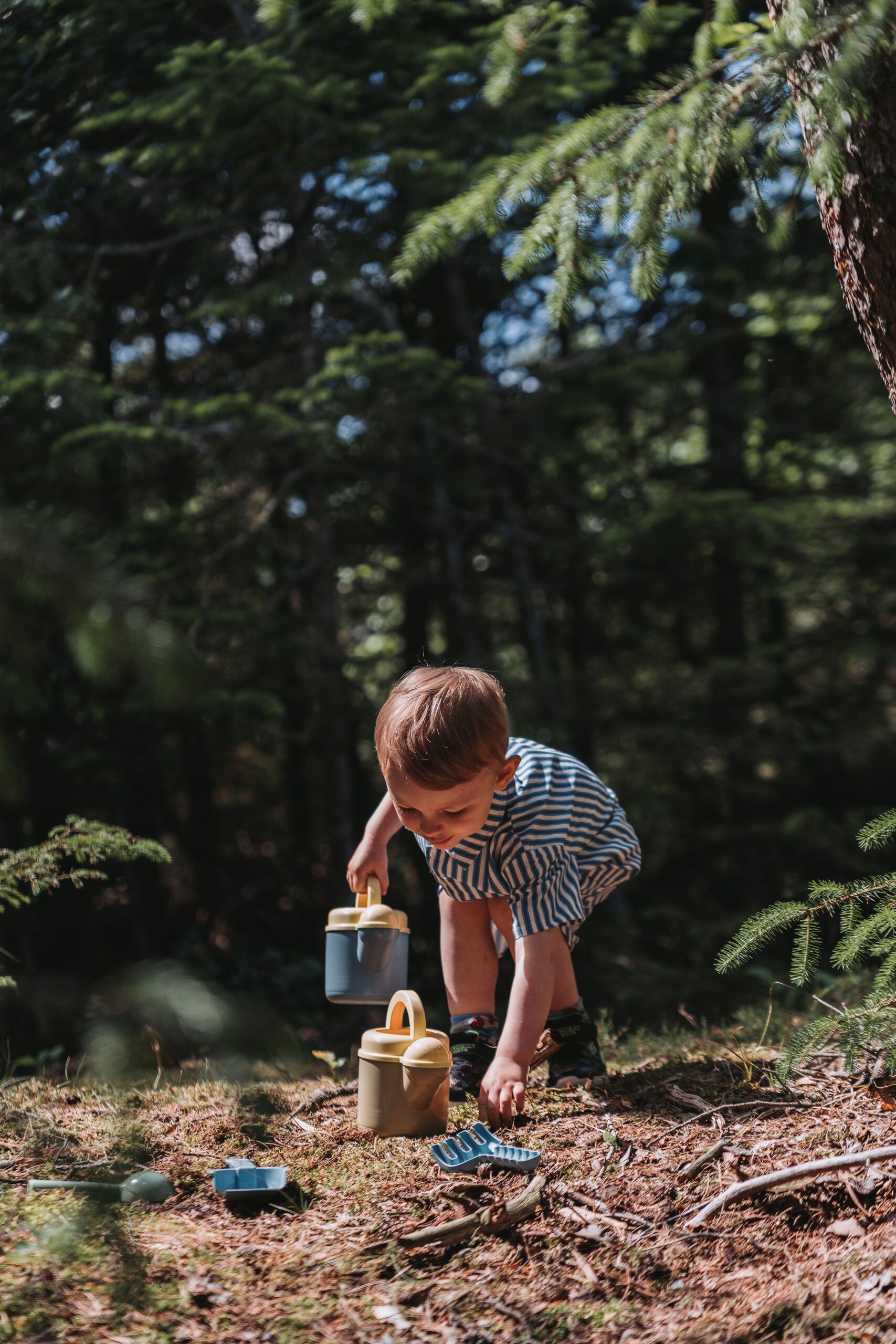
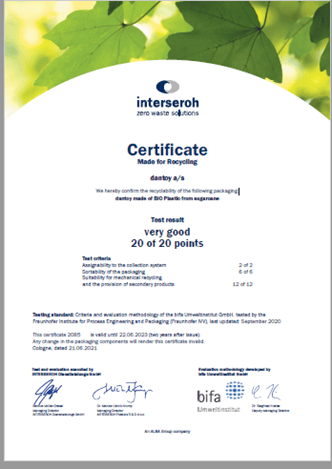
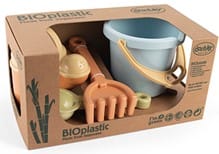
Bonsucro certification is the global platform for sugarcane.
The chain of standards allows for tracking sugarcane from origin to final product.
It enables brands to make sustainability claims about their sugarcane.
